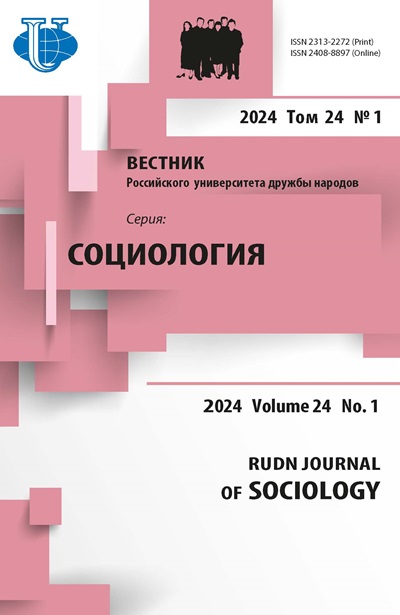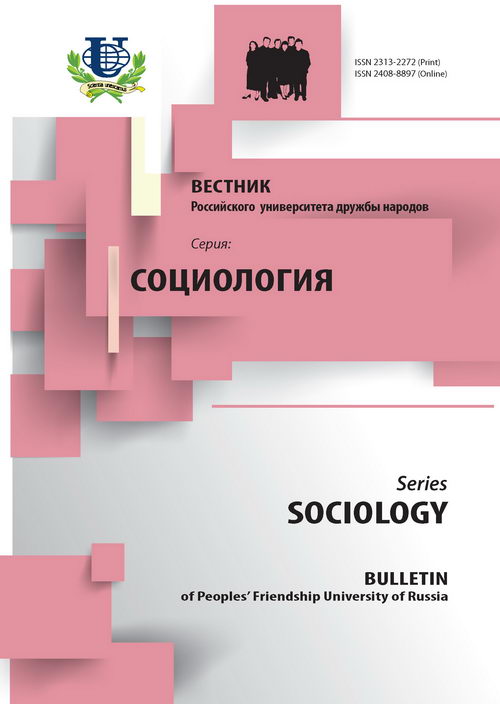Gender inequality indices for the European partnership countries comparison
- Authors: Kharchenko EI1
-
Affiliations:
- Taras Shevchenko National University of Kiev
- Issue: Vol 16, No 2 (2016)
- Pages: 323-336
- Section: Contemporary society: the urgent issues and prospects for development
- URL: https://journals.rudn.ru/sociology/article/view/6473
Cite item
Full Text
Abstract
Overcoming gender inequality is a serious challenge for many countries all over the world. Different reforms aiming at reduction of gender inequality are often a necessary condition for joining international alliances and associations. The article presents an example of comparative analysis of gender statuses in European partnership countries: Armenia, Azerbaijan, Georgia, Moldova, Ukraine and Russian Federation (1) on the one hand, and Iceland - on the other hand due to the latter leading position in the Global Gender Gap ranking. This ranking as well as the results of the comparative analysis can be useful for lecturers in the courses on gender inequality, international comparative studies and others. The author provides a definition of the concept “gender inequality”, an overview of existing methodological approaches to the international gender inequality measurement and interpretation. Based on the Global Gender Gap Index (GGGI) author describes men and women positions in the countries mentioned above in such socially important fields as politics, economy, education, and life expectancy; provides her own explanations of the current situation and perspectives for its development. The study shows that for all the countries under consideration the most problematic are (1) political sphere in the terms of women’s empowerment and (2) the sphere of healthcare from the point of quality and duration of men’s lives. The most unproblematic field from the comparative gender analysis point of view is educational sphere. According to the results of the comparative analysis, the most egalitarian country seems to be Moldova, while the least egalitarian - Azerbaijan. This article is based on the data of the International project ReSET «European visions and divisions: comparative studies in improving of teaching sociology” (supported by OSI HESP in 2010-2012).
About the authors
E I Kharchenko
Taras Shevchenko National University of Kiev
Author for correspondence.
Email: akh_univ@mail.ru
Methodology and Methods of Sociological Research Chair
References
- About the Gender Equality Index: European Institute for Gender Equality. URL: http://eige.europa.eu/content/gender-equality-index#/about.
- Analytical tools for human development”: Lisboa School of Economic and Management. URL: http://www.iseg.utl.pt/disciplinas/mestrados/dci/idh.htm#5.
- Dijkstra A.G. “Towards a fresh start in measuring gender equality: A contribution to the debate. Journal of Human Development. 2006. Vol. 7. № 2t.
- Gender Equity Index (GEI). URL: http://www.socialwatch.org/taxonomy/term/527.
- Global Gender Gap: World Economic Forum. URL: http://www.weforum.org/issues/global-gender-gap.
- Global Gender Gap Reports 2006-2014: World Economic Forum. URL: http://www.weforum.org/reports.
- Human Development Reports: UNDP. URL: http://hdr.undp.org/en/humandev/indices.
- Inequality-adjusted Human Development Index: UNDP Human Development Reports. URL: http://hdr.undp.org/en/content/inequality-adjusted-human-development-index-ihdi.
- Inglehart R.F., Norris P. Rising Tide: Gender Equality and Cultural Change Around the World. New York: Cambridge University Press, 2003.
- Social Institutions and Gender Index (SIGI): OECD. URL: http://www.oecd.org/dataoecd/ 52/33/42289479.pdf.
- World data Bank. URL: http://databank.worldbank.org/ddp/home.do.
- World Health Organization: Disease and Injury Mortality Estimates, 2000-2012. URL: http://www.who.int/healthinfo/global_burden_disease/estimates/en/index1.html.
- Khalturina D. Alkohol i narkotiki kak vazhneishie faktori demograficheskogo krizisa v Rossii i Ukraine [Alcohol and drugs as key factors of the demographic crisis in Russia and Ukraine]. URL: http://www.literatura.tvereza.info/21/Halturina/factorycrizisa_ru.html.
- Sayenko Y. (Ed.) Genderni stereotypy ta stavlennya gromadskosti do gendernih problem ukrainskogo suspilstva. Kiev: VAITE, 2007.
- Scherbakova E. V stranah SNG ostayesya vysokoi, osobenno sredi muzhchin, smertnost ot vneshnih prichin i socialnih boleznei [Death rate from external causes and social diseases remains high, especially among men, in CIS]. Demoscope Weekly. 2011. № 469-470. URL: http://demoscope.ru/weekly/2011/0469/barom05.php.














